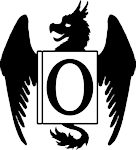Mrs. Frisby and the Rats of NIMH
The Rats of NIMH series, Book 1
Robert C. O'Brien
Simon & Schuster
Fiction, CH Fantasy/Sci-Fi
Themes: Altered DNA, Avians, Anthropomorphism, Classics, Country Tales, Cross-Genre, Medicine, Small Animals
***+
Description
Like many animals around the Fitzgibbon Farm in the English countryside, the widowed mouse Mrs. Frisby makes her winter home in the fallow fields, moving her four children to her summer house by the brook before the human plows the thawed earth. But this year, her young son Timothy has taken ill, and won't be well enough when an early thaw necessitates an early relocation. If she stays where she is, the plow will surely destroy her family. In desperation, she turns to an unlikely ally: the rats who live beneath the rose hedge. Even for their kind, these rats have a peculiar, secretive reputation, but they may be Mrs. Frisby's only chance to save her children... and she, in turn, might help them when they need it most.
Review
Like many children of the 1980's, I saw the Don Bluth animated movie based on this book (at a drive-in, if
memory serves)... and I confess that, as a kid, I found it boring enough I think I nodded off during it. (But,
then, I found many of Don Bluth's animated movies overlong and boring as a kid, even if the animation was often
beautiful.) Maybe if I'd been familiar with this 1971 book I'd have understood what the film was trying to do -
but, then, I'd probably have found the book a little dull and over-talkative as a child as well. As a grown-up, I
can appreciate what it was doing and how relatively groundbreaking it was, introducing sci-fi concepts into a
talking-animal setting, though I also admit to wishing O'Brien had stopped talking over and around everything,
particularly when filling in backstory.
It begins like many a classic anthropomorphic critter tale begins, with a mouse who is both a scurrying little farm
animal, fearful of predators and the farm cat Dragon (which is indeed something of a "dragon" in the tale, a
beastly hunter from which few escape), and also a widow who has a "house" in a cinder block and sits down at a
table with her children for meals. From early on, death is an unspoken specter in the animal world; she is happy
when she finds an unattended stash of food gathered by some other animal, even as she is saddened by acknowledging
that it likely met its fate in one of the winter hunts by the humans. When her smallest son Timothy takes ill, she
makes a dangerous trek to a wise mouse who is skilled in herbal medicines, but is warned that the boy must not be
moved for at least a month - and the ground is already thawing, meaning her home will likely not be safe for even a
week. Thus, her desperate quest to find help... a quest that inevitably leads to the rats (not a spoiler if it's in
the title) and the tale of NIMH (again, not a spoiler if it's in the title).
This becomes O'Brien's excuse to infodump all over the
frantic-mother-trying-to-save-her-children-from-death-by-plow-blade plot with the backstory of how the farm's rat
population came to their unusual abilities and intelligence, including but far from limited to tapping the
Fitzgibbons' electricity and water, constructing motors and machinery, and mastering reading and writing. It's
enough for an entirely different book altogether, yet it's shoehorned in here, overshadowing Mrs. Frisby's plight
before the two ideas come to a somewhat lopsided coexistence as the connection to her late husband is
revealed.
The widow mouse is less meek and passive than some females in these kinds of stories (and some in this very story,
to be honest; her own two daughters are dismissively described as the pretty one and the silly one, while female
rats are shown to be minimal participants in the colony's projects and the one named girl rat is a shallow
infatuated stereotype), forced by circumstance to bravery and resourcefulness not common in wild rodents. The fact
that death is always shadowing the characters lends some genuine peril to their situation; it's always an
acknowledged possibility that not everyone will make it out alive. Along the way, O'Brien just can't resist
bogging the story down in side-tracks through pointless details and cul-de-sacs that add little to the tale itself
except word count. The wrap-up has some strong moments, but feels a little abrupt and unfinished; apparently the
two sequels were written by O'Brien's daughter after his death, so the dangling loose threads were not even
intentional bridges to more tales.
There are several interesting ideas explored (if somewhat unevenly), concepts of intelligence and civilization and
animal experimentation's potential ramifications. O'Brien also presents some nice imagery, and the story (when it's
not weighted down by its own meandering loops) isn't bad. The parts don't always seem to mesh together, though; it's
clear O'Brien was more interested in his rats, their origins and potential fate, than the somewhat cutesy and mildly
mismatched tale of the country mouse widow and her children, who ultimately exist mostly to be awed by the rats and
their amazing abilities and potential. It's still a classic in its way.
